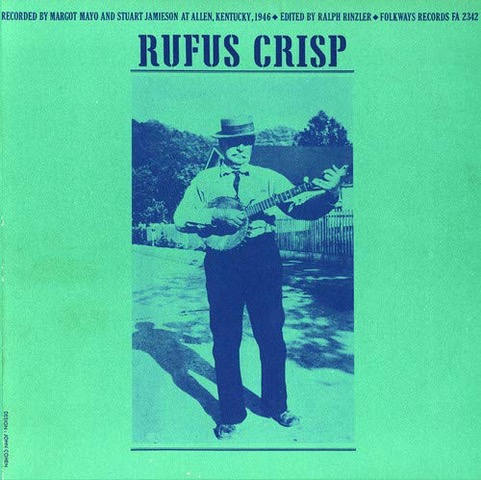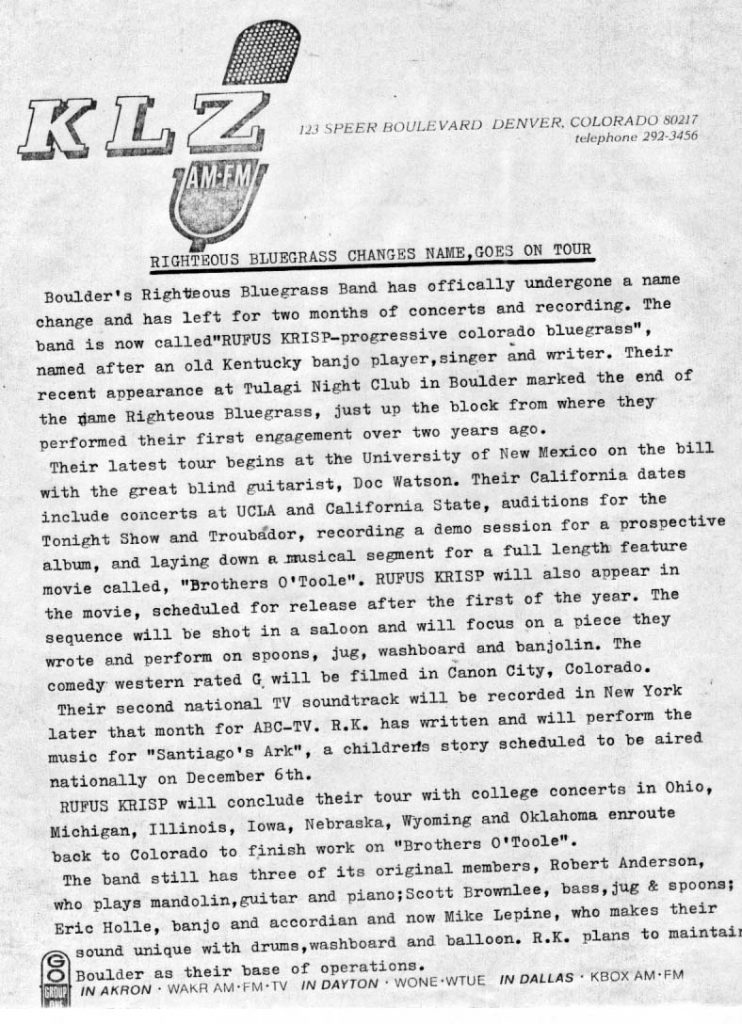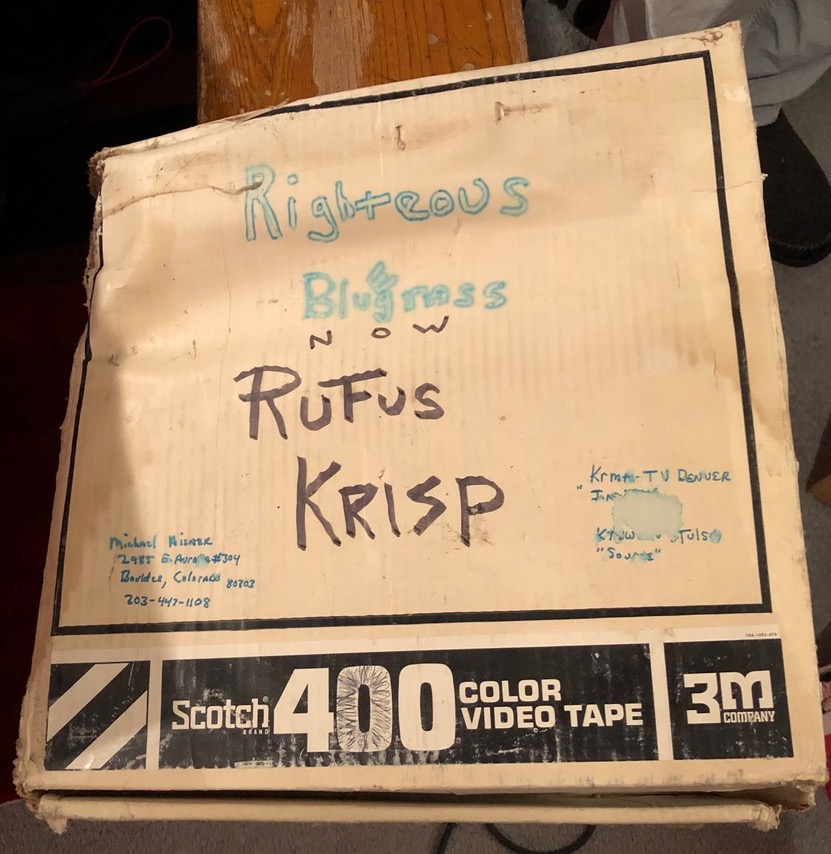Righteous Bluegrass Band to Rufus Krisp to Gone Johnson
RUFUS KRISP — THE ORIGINS!
This is a story of a band in three parts, the centerpiece Rufus Krisp, bookended by its first iteration the Righteous Bluegrass Band and followed by Gone Johnson.
Well this whole story actually commences in 1970 Boulder, Colorado at the Hungry Farmer Restaurant, a corny barn-motif eatery with free peanuts, sumptuous burgers, bottomless fries, “fresh” icy Coors on tap, haybales and poor wait staff in red-checkered hayseed flannels, bib overalls and red neck (redneck?) scarves — exactly out-of-touch with the 1970’s rapidly hippying population.
Nearly every Thursday night a Denver FM radio rock DJ Michael Aisner and buddy “Bud” Leonard made a weekly sojourn to the Hungry Farmer in a ’31 Chevy to watch old silent films.
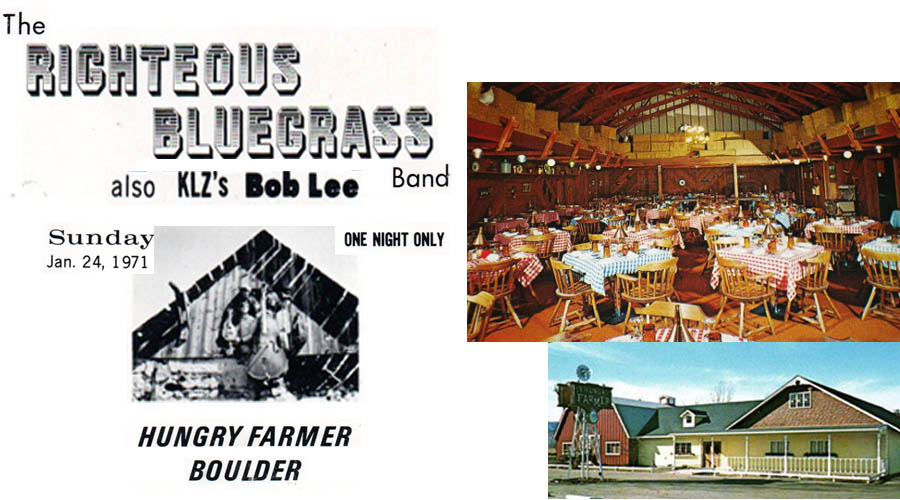
And damnit if in the middle of the best part of a Buster Keaton tear-jerker they didn’t shut off the film projector and some guys with instruments started setting up. WHAT, is nothing sacred? Save for the fact that Mike and Bud were only a few bites in, they would have split in protest. But… only a few bars of Dixie Breakdown and they were tapping and clapping for the rest of the night — the Righteous Bluegrass Band — a studious banjo, pop starish mandolin, outlandish standup bass and first-chair looking fiddle. These guys were AWESOME!
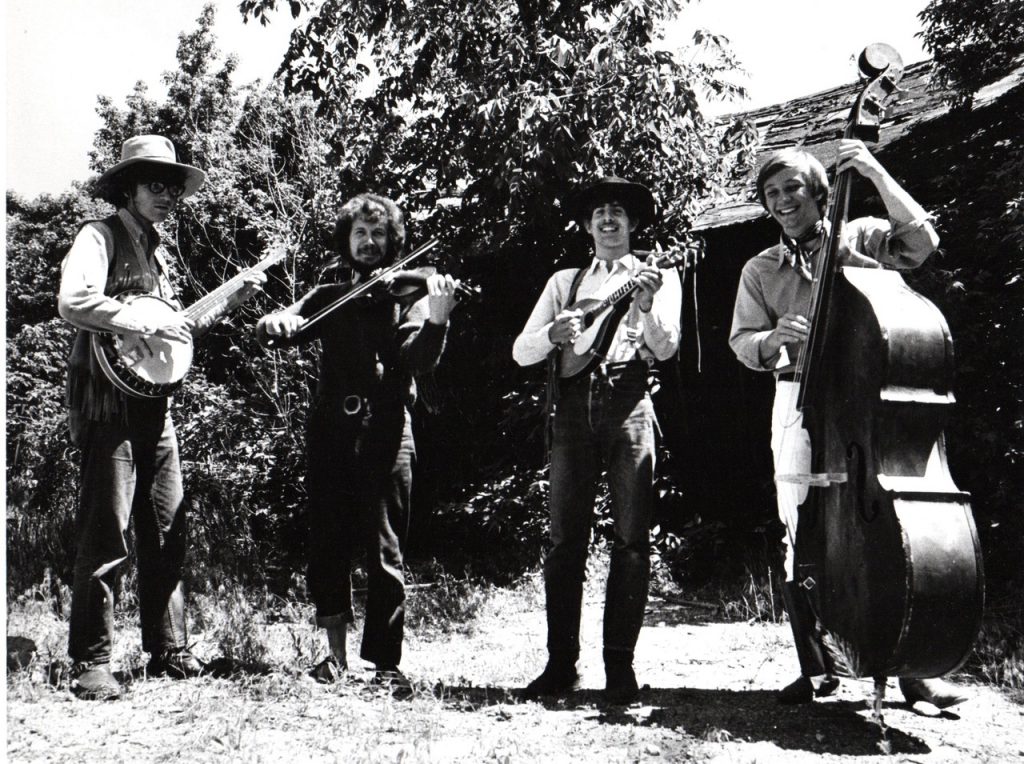
So, this story starts with the RBB. Eric Holle, banjo; Robert Anderson, mando/vocals; Scott Brownlee, bass/vocals; Fiddlin’ Dick Sparks, fiddle.
Mike Aisner had become the boys manager and started booking them, and off they went to years of colleges and festivals, clubs, ski resorts, a movie appearance and two TV network soundtracks. They also wrote commercials, did a Disney World summer run, and TV Specials … and on and on.
You could track their progress criss-crossing America with the trail of Pennzoil 10W 30 from Vincent, their sometimes trusty heat-challenged VW van.
“Vincent van go!” they’d yell.

John Prine and Steve Goodman opened for them in Chicago where Goodman offered them his “City of New Orleans” months before Arlo.
“Sorry Stevie, not our style.” Oh well.
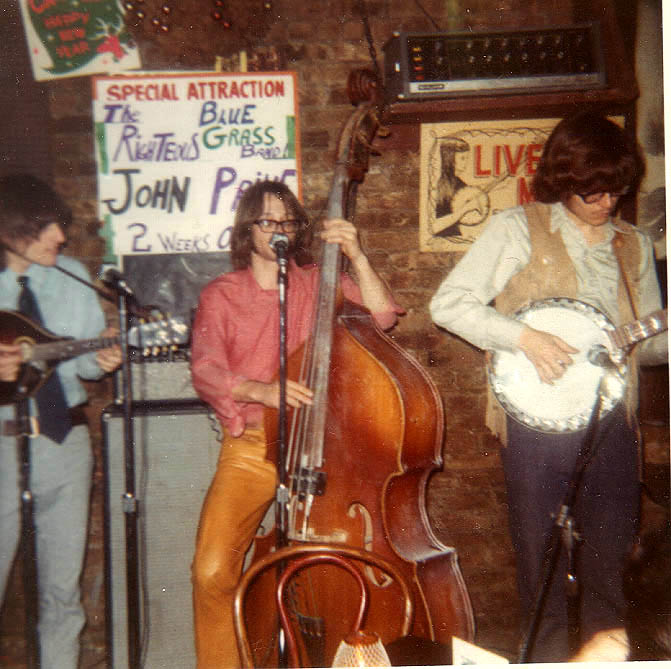
Later a stint as John Prine’s backup band…
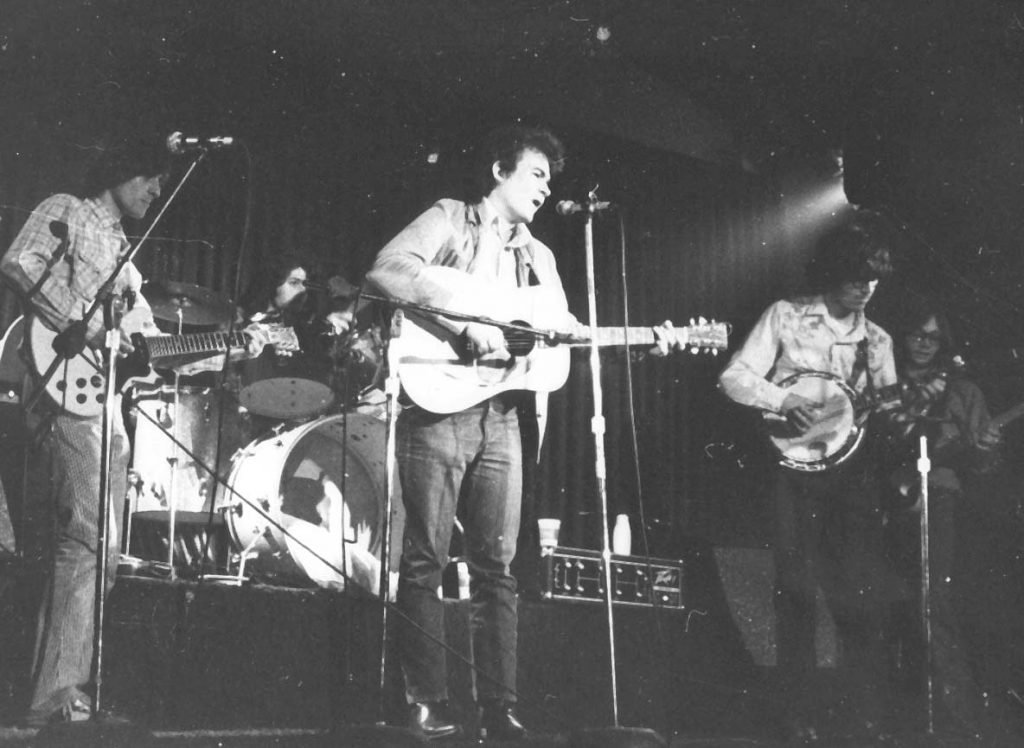
The boys toured with Doc Watson and Earl Scruggs and made the hallowed cover of Bluegrass Unlimited. And then….(drumroll) this band bucked everything sacred in bluegrass and added……(wait for it)….even added DRUMS to punch-up their high-test bluegrass stage energy….oh the humanity!
Elton John’s famed producer drove a hundred miles from the legendary Caribou Ranch studio to Vail to see them…and most importantly the RBB added yet another member…a street-smart pigeon they named Rufus who gigged with them on many a Tour, and in a John Astin feature-film western, eventually retiring in Des Moines after green-washing the iconic white jacket of another guest on a Chicago TV appearance… Col Sanders!
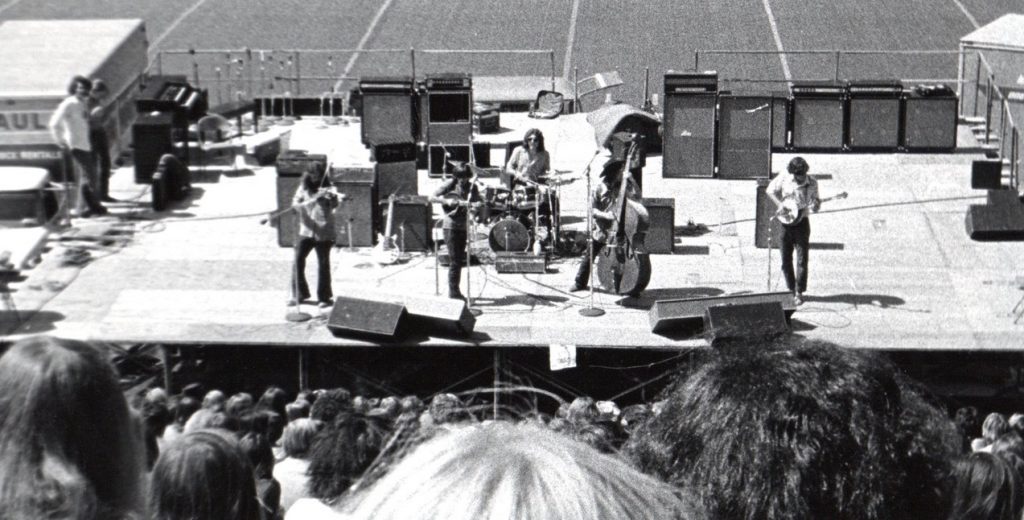
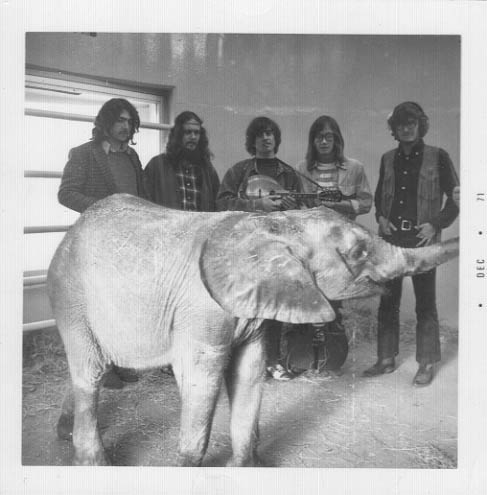
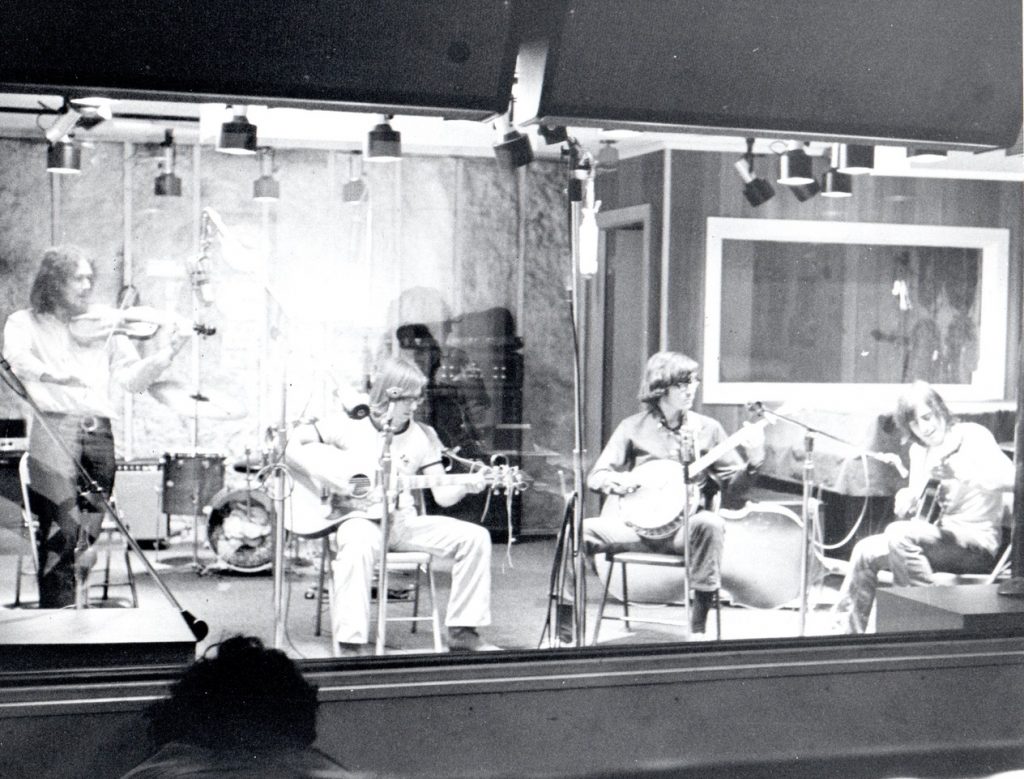
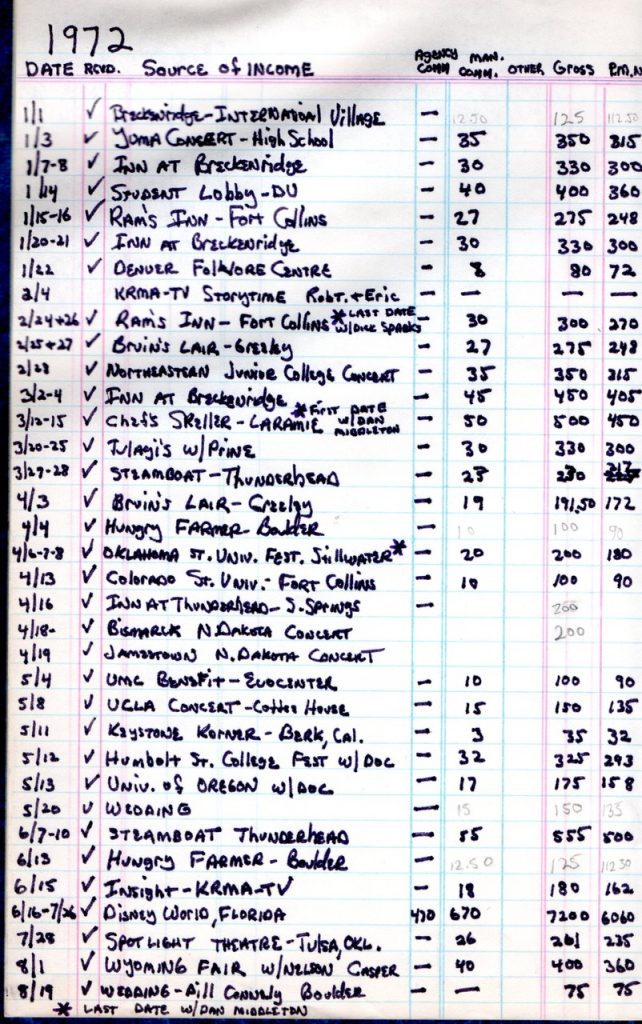
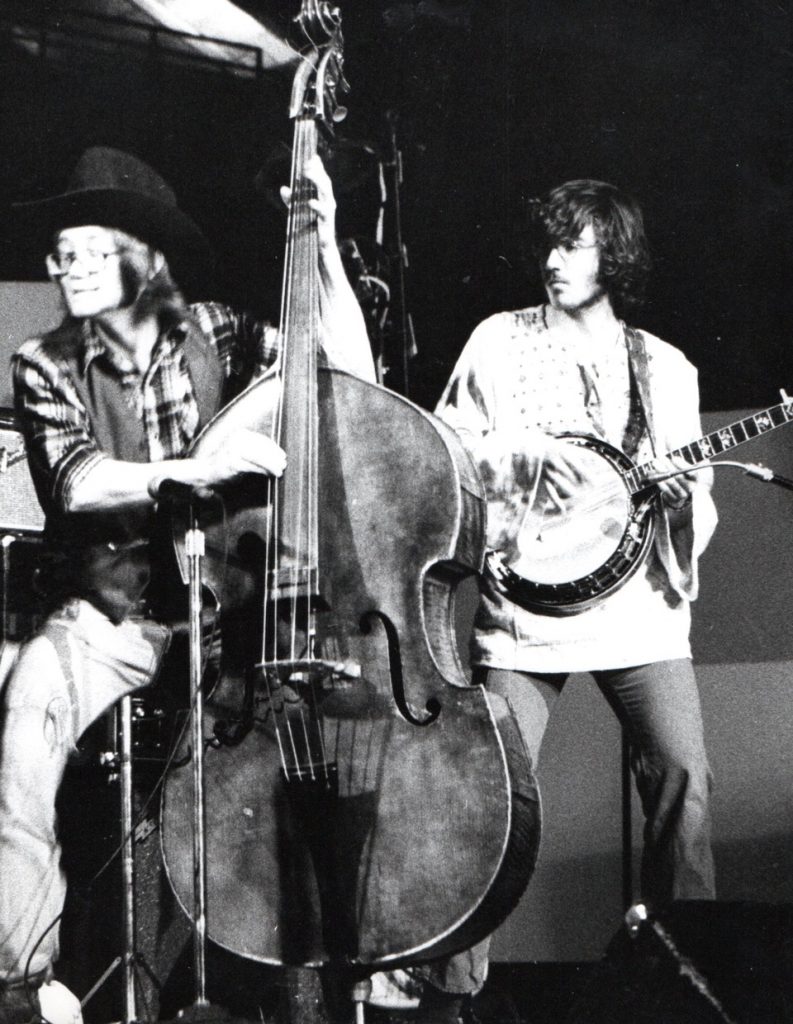
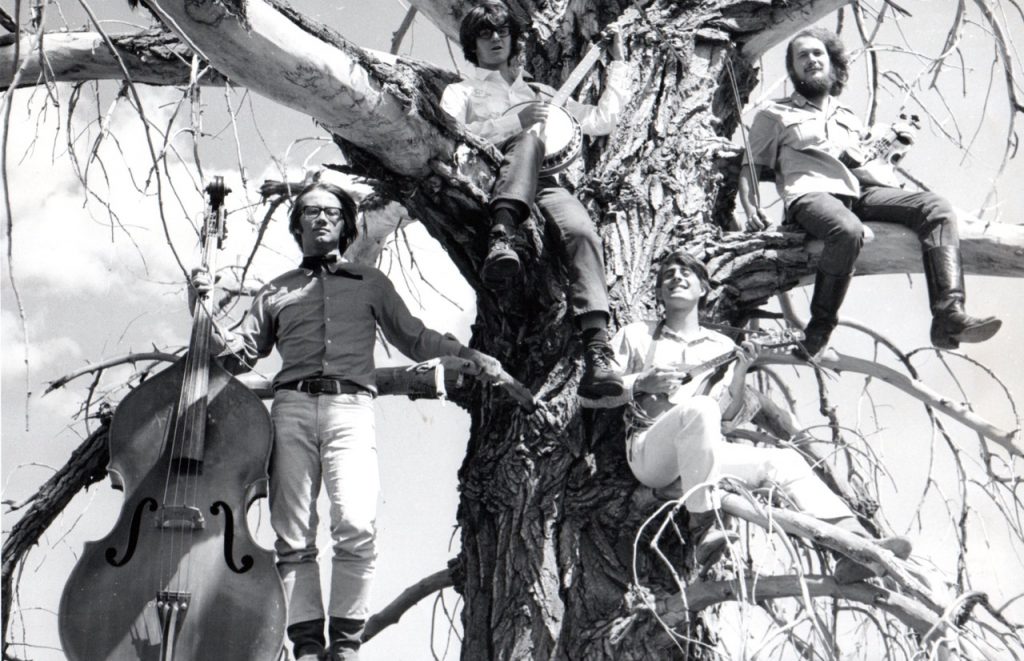
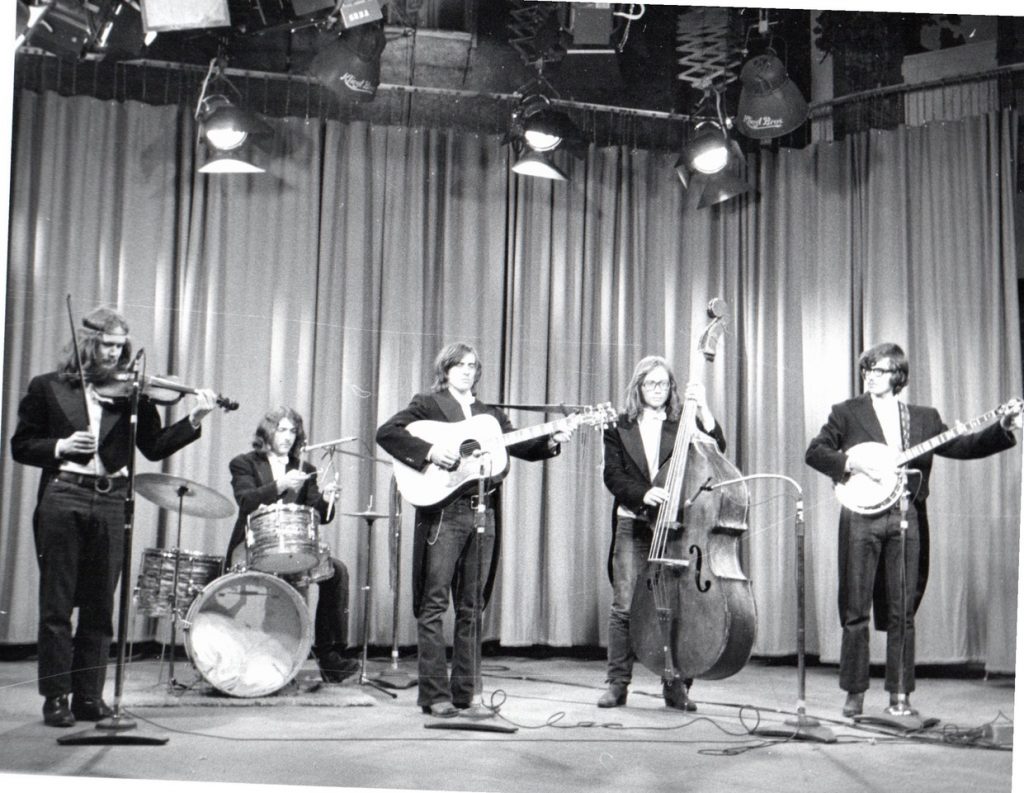
Dressed appropriately for their untamed cover of a Jacques Offenbach classical can-can on their first TV Special.
The long-hair Colorado bluegrassers (with drummer) miraculously morphed in the Disney World barber shop to conform to a summer of stage frivolity in front of zillions. Oh and Fiddlin’ Dick said no thanks to Disney World.
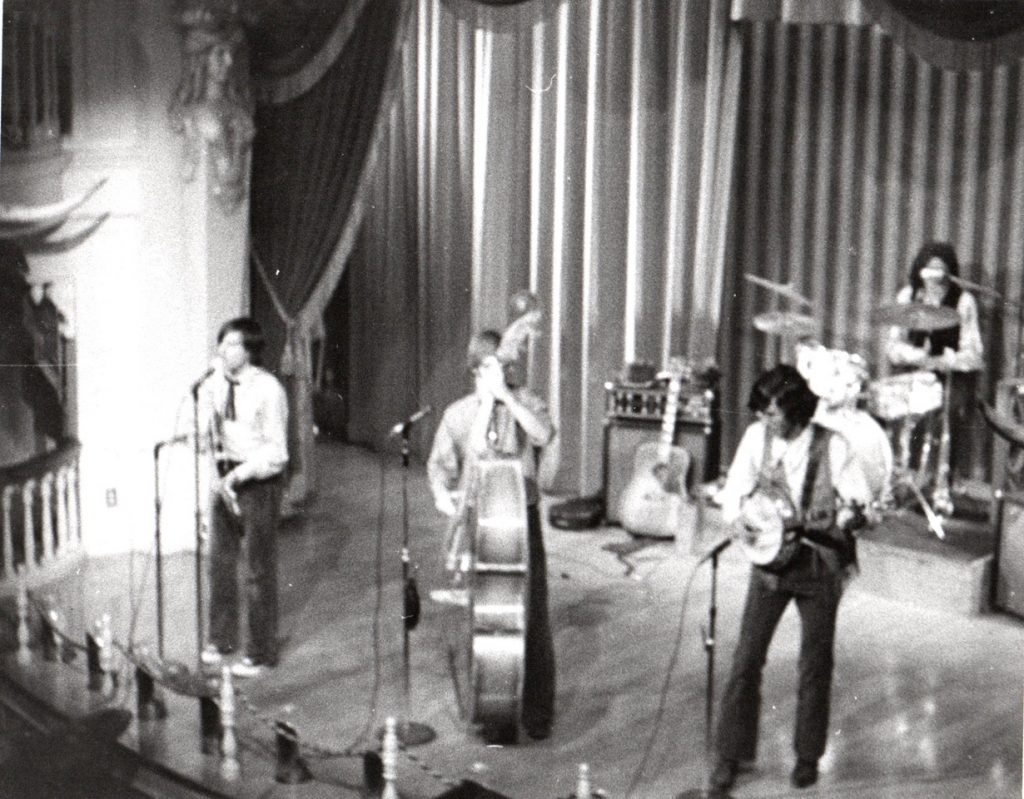
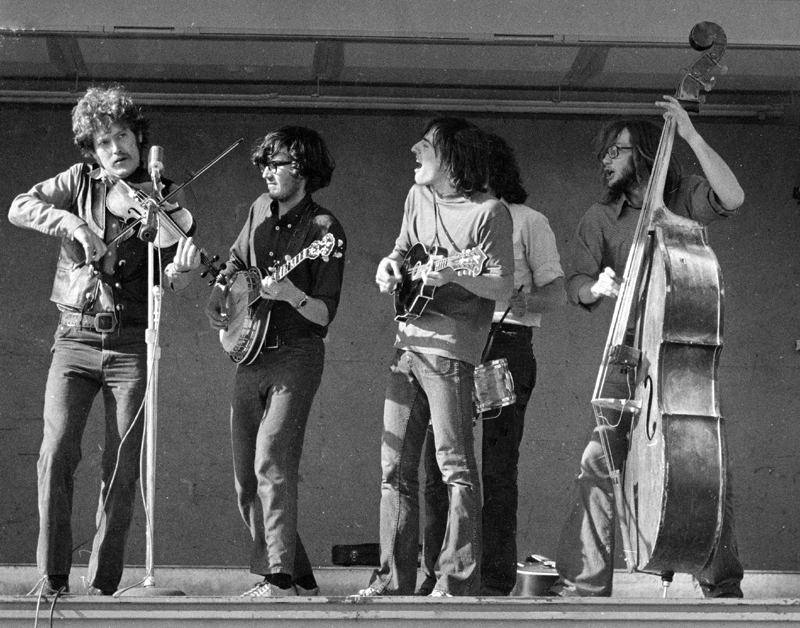
After Fiddlin’ Dick, Fiddlin’ Dan (Middleton) sawed with the boys for a few extended tours.
Oklahoma Bluegrass Festival school visit with folk legend Mike Seeger, where the boys jammed with Earl Scruggs and Bill Monroe.
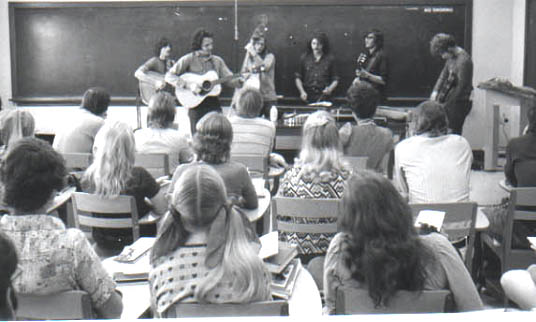
But things evolved, and to not be pinned to the somewhat UN-RIGHTEOUS Bluegrass Band (now bearing evil forbidden drums) name, they stumbled on an old Folkways recording of this straw hat Kentucky hillbilly picker named Rufus Crisp. Crisp croaked in ’55 and SOMEHOW the band thought it “cool” to pay homage to this relatively obscure clanky folk character…avoiding infringement, Rufus Krisp was their new name.
